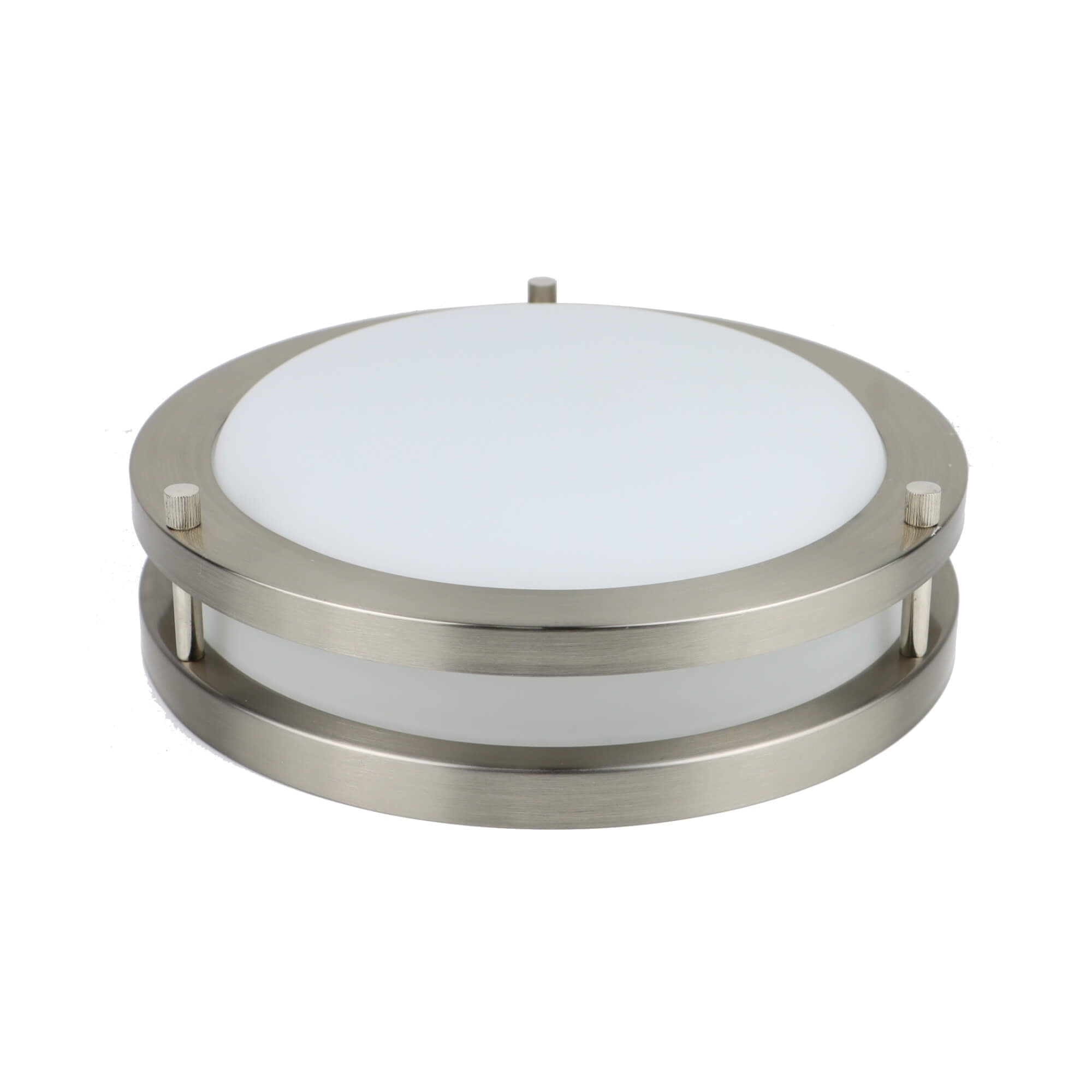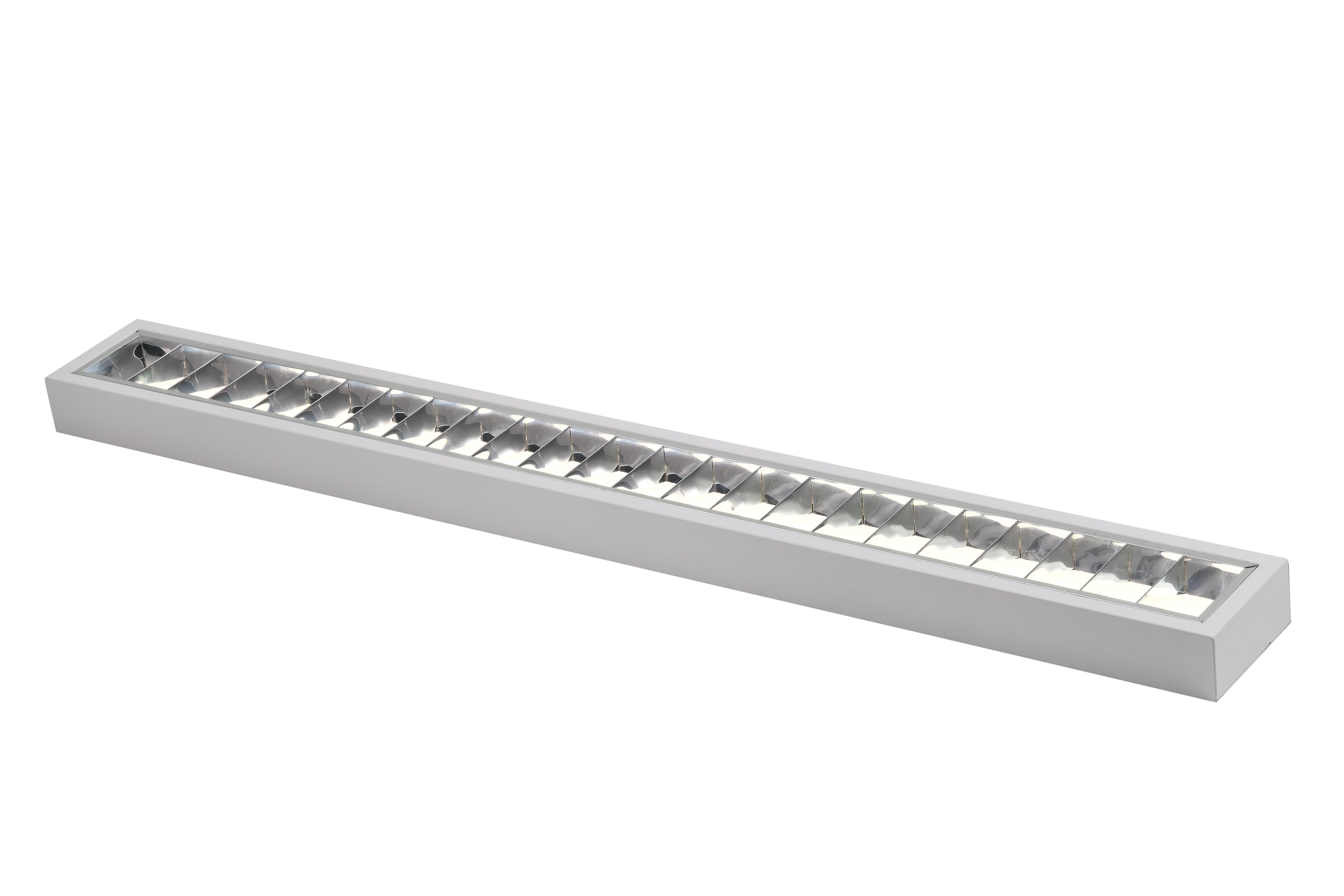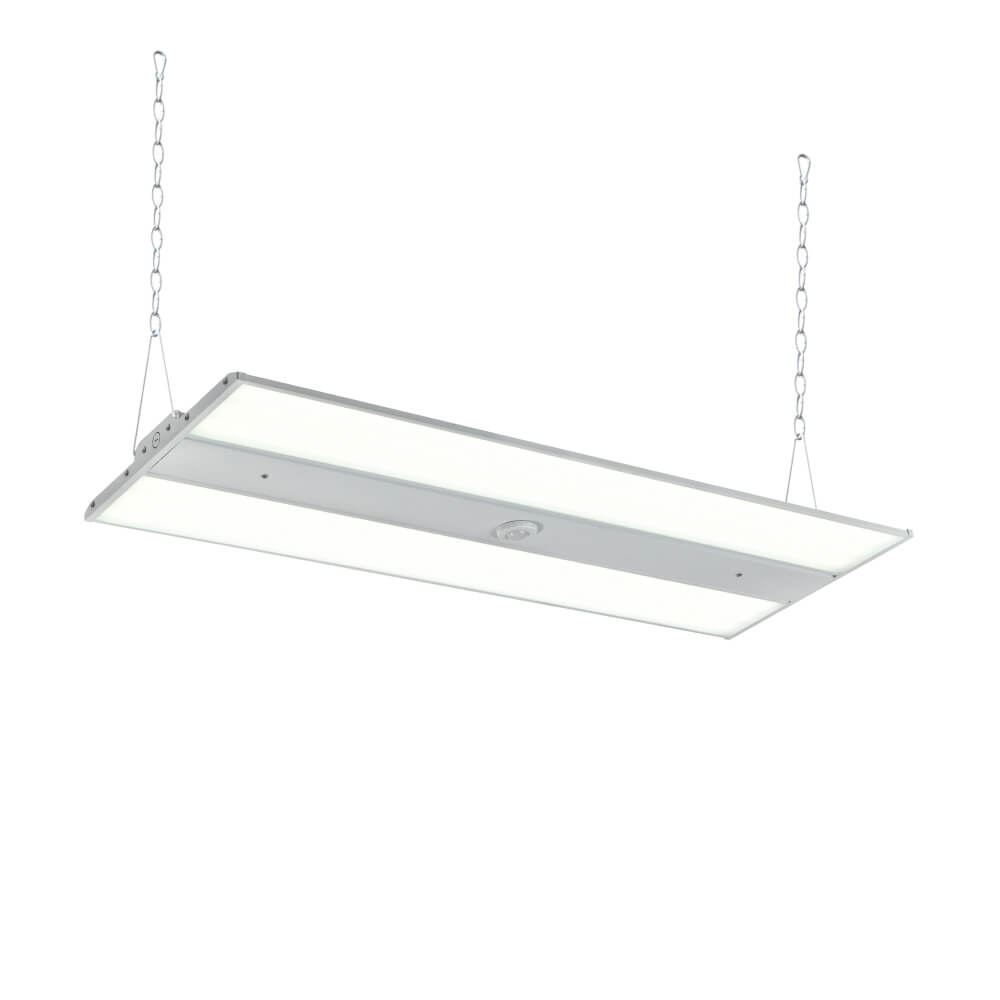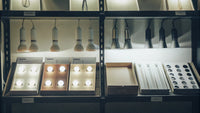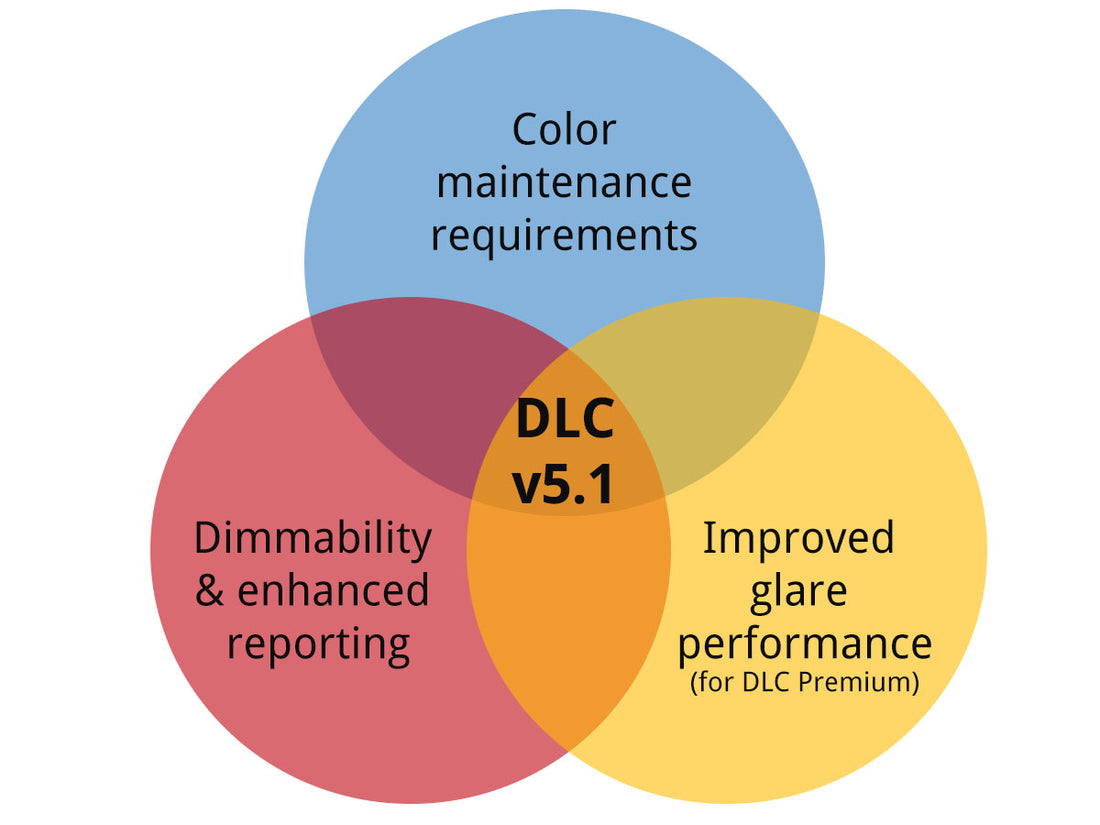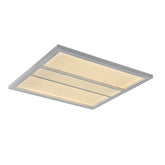LED Lighting: DLC Standard vs. Premium Certification
In today's eco-conscious world, making informed decisions about energy-efficient lighting is not just a matter of preference but a strategic necessity. At the heart of this decision-making process for bulk LED installations are two key certifications offered by the DesignLights Consortium (DLC): DLC Standard and DLC Premium. Each carries a set of criteria and benefits that can significantly impact the long-term cost, sustainability, and efficiency of lighting projects. This article aims to demystify these certifications, offering a clear comparison to help you determine which is the best fit for your large-scale lighting needs. Whether you're an industry veteran or new to the field of energy-efficient lighting, understanding the nuances between these standards is crucial for optimizing both performance and value in your next lighting venture.
What is DLC Certification?
The DesignLights Consortium is an organization that aims to push for energy efficiency in the lighting industry. Their mission is to drive the lighting market toward innovative solutions that reduce negative environmental impacts like carbon emissions and excess energy waste. By setting specific standards for LED lighting products, they ensure users can trust the efficiency, quality, and reliability of lights with their certification.
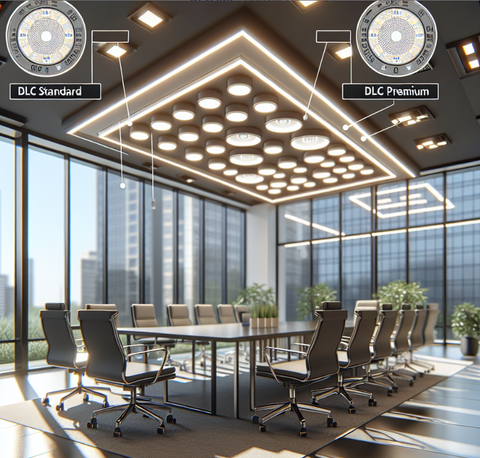
A product earns a DLC listing by meeting guidelines that focus on several performance metrics. These include how much light a fixture produces per watt of electricity (efficacy), its overall light quality, longevity, and its consistency in color and brightness over time. Manufacturers submit detailed test reports from approved third-party laboratories to prove their products meet these high standards. Once verified, products are added to the DLC's Qualified Products List, which utilities and rebate programs often reference when offering incentives for energy-efficient lighting solutions.
DLC Standard: An In-Depth Look
Criteria for Qualification
- Efficiency Standards: To qualify for the DLC Standard certification, LED products must meet certain efficiency standards which are based on a minimum level of luminous efficacy. Luminous efficacy is a measure of how well a light source produces visible light, calculated by the lumens (a measure of light output) per watt (a measure of power input). The DLC sets these minimum efficacy thresholds to ensure that products are more efficient than traditional lighting technologies and baseline LED offerings.
- Luminous Efficacy Rates: The specific luminous efficacy rates required for DLC Standard qualification vary depending on the type of lighting product. For example, an indoor linear fixture must have a different luminous efficacy rate than an outdoor floodlight to meet the standard. These rates are determined by the DLC and updated periodically to reflect advancements in technology and increases in the baseline performance of LED lighting.
Pros and Cons of DLC Standard Certification
- Reduced Initial Costs: DLC Standard products tend to be more affordable upfront compared to DLC Premium options. This cost-effectiveness makes them a popular choice for businesses or organizations looking to upgrade their lighting systems without significant initial investments.
- Suitability for Various Environments: These products are versatile and can be used in a wide range of settings, from interior spaces like offices and classrooms to exterior applications such as parking lots and street lamps. The DLC Standard offers a good balance of performance and energy savings suitable for everyday use.
- Limitations Compared to DLC Premium: While DLC Standard products are efficient, they may not offer the same level of energy savings and longevity as DLC Premium products. Additionally, they might not qualify for the higher rebates or incentives often associated with premium-level products. For projects where maximum efficiency and durability are key priorities, DLC Standard might not be the best fit.
DLC Premium: Going Above and Beyond
Stringent Qualification Criteria
- Higher Efficiency Requirements: DLC Premium certification requires a higher level of energy efficiency compared to the DLC Standard. Products must demonstrate exceptional performance, surpassing the already strict criteria for basic certification. This includes superior operational efficacy and adherence to stringent testing protocols.
- Enhanced Performance Benchmarks: Besides improved energy efficiency, DLC Premium products must also meet enhanced performance benchmarks. These include better thermal management, which ensures that lights maintain consistent performance over time. A longer-rated life is another critical benchmark, guaranteeing that these lights will last significantly longer before needing replacement. In fact, understanding and implementing practical strategies to maximize LED lifespan can help end early burnouts and extend the life of your lighting investments even further.
Advantages of DLC Premium Certification
- Long-Term Energy Savings: With higher efficiency comes greater long-term energy savings. DLC Premium-certified products consume less electricity, leading to reduced energy costs over the lifespan of the product. For large-scale installations, such as office spaces, this can result in substantial cost savings. However, the advantages don't stop at your budget. Discover the full range of benefits of upgrading your office with LED ceiling lights, from enhanced productivity to even more opportunities for budget savings.
- Rebates and Incentives: Many utilities provide greater incentives for DLC Premium-certified products. These rebates can dramatically lower the initial investment, making these high-performing products more accessible and financially viable.
- Potential for Higher Quality and Durability: The rigorous testing and qualification process for DLC Premium means that these products are often of higher quality and more durable. They are designed to withstand prolonged usage, which can reduce maintenance needs and further contribute to overall savings.
Considerations Before Choosing DLC Premium
- Upfront Investment: The advanced technology and increased benefits of DLC Premium products often come with a higher price tag. Entities considering these products should evaluate whether the long-term savings justify the initial cost, particularly in scenarios where the lights will be heavily used.
- Specific Scenarios That Justify the Premium: Installing DLC Premium lighting may be most beneficial in environments where lights are expected to operate for extensive periods, such as in continuous production facilities or around-the-clock service centers. In these cases, the energy savings and reduced need for maintenance can offset the higher upfront costs, making DLC Premium the more economical option in the long run.
Cost-Benefit Analysis for Bulk Installations
Initial Costs vs. Long-Term Savings
- Breakdown of Financial Implications for Both Categories: When considering bulk LED installations, it's important to weigh the initial cost against potential long-term savings. DLC Standard products generally have a lower upfront cost compared to DLC Premium products. However, this initial saving may be offset over time by the latter's higher energy efficiency and lower maintenance costs, which lead to ongoing savings on utility bills and reduced labor.
- Case Study Comparisons: Analyzing real-world examples can illustrate the financial impacts of choosing between DLC Standard and Premium certifications. Case studies often show that while DLC Premium products require a larger investment at the outset, they tend to result in greater overall savings due to their longer lifespan and decreased energy consumption. If you're grappling with decisions regarding the quality and cost of LEDs, understanding how to spot the best LED products can guide you toward making investments that balance upfront costs with long-term benefits.
Energy Consumption and Sustainability Impact
- Projected Energy Use Over Time: LED installations with DLC Premium certification are designed to use less energy than their DLC Standard counterparts. Projecting energy use over the life of the products can help quantify the expected savings and demonstrate the sustainability benefits, such as reduced carbon footprint and lessened demand on energy resources.
- Environmental Considerations: Beyond direct energy savings, there's an environmental benefit to selecting more efficient lighting options. Lower energy consumption translates to fewer greenhouse gas emissions from power plants, contributing to broader efforts to combat climate change. This is an important consideration for organizations aiming to meet sustainability goals or improve their environmental stewardship.
Maintenance and Lifespan Expectations
- Comparison of Product Longevity and Reliability: The longevity of a lighting product affects both its cost-effectiveness and its environmental impact. DLC Premium products not only tend to last longer but also maintain their brightness and color quality over time, leading to fewer replacements and thus reducing waste and maintenance requirements.
- Implications for Large-Scale Projects: For large installations, where replacing fixtures can be costly and disruptive, the reliability and extended service life of DLC Premium products can offer significant advantages. The reduced frequency of replacements means less downtime and interruption, along with savings in labor and materials over the project's lifetime.
Making the Right Choice for Your Installation
Evaluating Specific Needs
- Determining Key Factors Based on Project Size and Goals: Selecting between DLC Standard or Premium certifications requires a clear understanding of your project's specific needs. Consider the size of the installation area, the goals for energy efficiency, the desired quality of light, and budget constraints. For instance, a smaller project with limited use may not benefit as much from the higher efficiency of DLC Premium products, while a large project with intense usage will likely find the additional investment worthwhile.
- Importance of Compatibility With Existing Systems: It's also important to ensure that any new lighting is compatible with existing systems. This includes not just physical fitting but also compatibility with control systems for dimming or automation if those features are used. The compatibility can affect both initial installation costs and ongoing operational efficiency.
Strategic Decision-Making Guidance
- Advice for Conducting Cost Analysis: Before making a decision, undertake a detailed cost analysis that considers the total cost of ownership including initial purchase price, installation costs, expected lifespan, maintenance expenses, and potential energy savings. A comprehensive cost analysis will provide a clearer picture of which certification level offers the best return on investment for your specific situation.
- Consulting With Industry Experts: Seek advice from industry professionals who have experience with LED installations and DLC certifications. Their insights into product performance, emerging technologies, and incentive programs can be invaluable in navigating the decision-making process.
Future-Proofing the Installation: Consider how future changes in technology or energy pricing might affect your installation. It's wise to choose options that leave room for scalability or upgrades, ensuring that your lighting system remains efficient and cost-effective in the long run.
Maximizing Return on Investment with Rebates and Incentives
Understanding Rebate Programs
Utility companies often offer rebates for the installation of energy-efficient lighting, which can significantly reduce initial costs. Researching available rebate programs in your area or industry is crucial because these incentives can vary widely. Some utilities may offer different rebates for DLC Standard versus DLC Premium products, typically favoring the latter due to their higher efficiency levels.
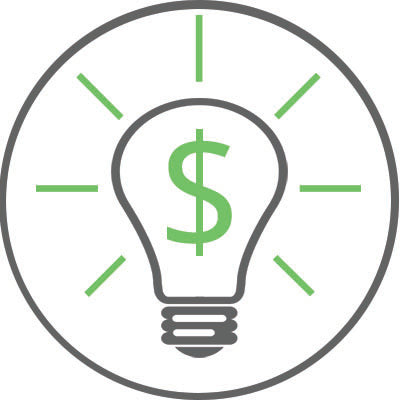
To qualify for rebates, LED lighting products usually must be on the DLC's Qualified Products List. It's important to understand the specific requirements of each rebate program, as there might be application deadlines, required documentation, or other stipulations that need to be met to secure the financial incentives.
Leveraging Incentives for Upfront Cost Reduction
When you're calculating the cost of a new lighting system, include any potential rebates in your total budget from the outset. This will give you a more accurate picture of the true upfront cost and can make a significant difference in your decision-making process, especially when comparing DLC Standard and Premium options.
The paperwork and process to claim rebates can be complex, but they are worth navigating to maximize savings. Keep meticulous records of all communications and submissions related to rebates. Sometimes manufacturers or distributors will offer assistance with this process, so inquire about what support might be available.
Considering Long-Term Financial Incentives
Beyond immediate rebates, consider participation in broader energy efficiency programs that might accompany long-term financial benefits. Some programs offer ongoing incentives based on the amount of energy saved over time. Being part of such initiatives not only provides financial perks but can also enhance a company's reputation for energy conservation.
Additionally, tax incentives may be available for energy-efficient upgrades. These can come in the form of deductions, credits, or depreciation benefits. Consult with a tax professional to understand how these incentives could influence the overall financial outlook of the lighting project.
Choose the Best DLC Certified LEDs for Your Bulk Lighting Project
The choice between DLC Standard and DLC Premium certifications for bulk LED lighting installations hinges on a careful evaluation of your project's requirements and long-term financial goals. DLC Standard might be suitable for those with immediate budget constraints or moderate lighting needs. On the other hand, DLC Premium, though more costly upfront, can offer superior energy savings and lower maintenance costs over time. With potential rebates and incentives factored in, the long-term cost benefits of DLC Premium could significantly outweigh the initial expense. It is essential to analyze the total cost of ownership and consider environmental impact when making your decision. By doing so, you will ensure that your investment in LED lighting is both economically sound and environmentally responsible, providing value and efficiency for years to come.
